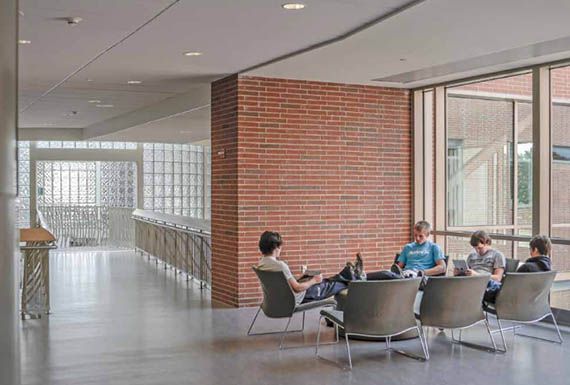Creating collaborative spaces for different grade levels is important, and schools are beginning to design classrooms that will accommodate a wide variety of learning activities lectures, cooperative learning, group activities, learning by teaching or presentations or lectures by students, multimedia technology in classroom, etc.
Since learning is reliant on the social, emotional, and physiological development of students, this creates differences in what is needed for elementary, middle, and high school students. We believe that collaborative spaces should be designed differently for each age group and structured so that learners can develop the ability to work in large groups, in small groups, and independently. This in turn help create a culture of responsibility and trust.
In this detailed article, THEJOURNAL talks about guidelines for choosing the right classroom design, to help students work together more effectively. You can also catch up on Part 1 of this series here…
Some interesting suggestions in the article are:
“Classrooms are generally organized with a variety of activity settings to support formal, informal, and creative activity settings. These settings might include block corners, reading corners, and painting corners, as well as tables with chairs, rugs, soft seating, and a private reflective area.”
“Doors connect classrooms directly to one another and to the learning areas beyond these rooms. Having doors instead of folding partitions allows movement between settings. Furthermore, when doors are opened or closed, corner areas can serve as quiet or private work spaces.”
“Corners are the primary salient features within instructional spaces, allowing separation for groups of learners, while providing them with visual, auditory, and physical connections to one another.”
“Breakout areas, while appearing more open, must be designed with clearly defined zones supporting a variety of social groupings. These areas (which include nodes, niches, hollows, and holes) should be programmed and planned to promote the activities that occur routinely.”
“Technology supports collaborative learning activities. In some breakout settings, there might be tables with chairs located in front of interactive LCD screens. In other breakout areas, there might be seating and/or countertops for laptops or tablets.“

Key questions for your design team candidates:
How long have you been designing for schools?
Describe your design approach and philosophy. What educational theory or theories guide your design approach? What projects have you done that show your theory reflected in the design?
What is a collaborative space? How do you imagine various constituencies using these spaces?
What is a flexible learning environment? How does flexibility support collaboration?
How has information technology influenced the learning environment, both positively and negatively?
What technologies would you recommend for the learning environment and why?
Tell us about a special feature or features of the learning environments that you have created to support teaching and learning.
For more on how your learning institution can create collaborative classroom environments, contact Actis at 022-30808080 or email us at contact@actis.co.in
(Content and image credits: www.thejournal.com)
